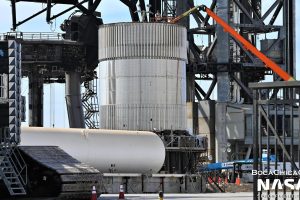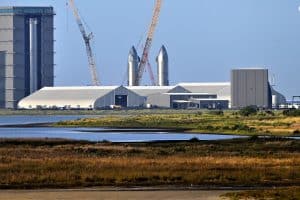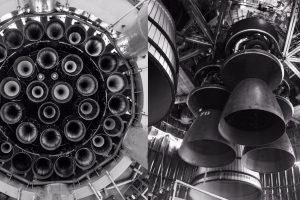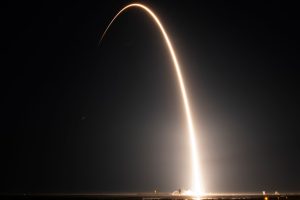For the third time in four months, SpaceX has rolled the first potentially flightworthy Super Heavy booster towards Starbase’s orbital launch mount.
Combined with a large crane – fitted with a jig solely used to lift boosters – moving to a spot just beside the booster, it’s clear that SpaceX is preparing to reinstall Super Heavy Booster 4 (B4) on the orbital launch mount. In the context of its unusual history, though, what happens next to the first more or less finished prototype of the largest rocket booster ever built is less clear.
After a shockingly quick assembly over the course of six summer weeks, Super Heavy Booster 4 rolled out of Starbase’s ‘high bay’ facility and headed to the nearby orbital launch complex, where it was installed on a custom ‘mount’ designed to support booster testing and orbital launches. It’s now clear that during that early August photo opportunity and fit test, Booster 4 was nowhere close to finished. Nor, apparently, was it anywhere close to complete one month later when it returned to the orbital pad for the second time after another few weeks of work back at the high bay.
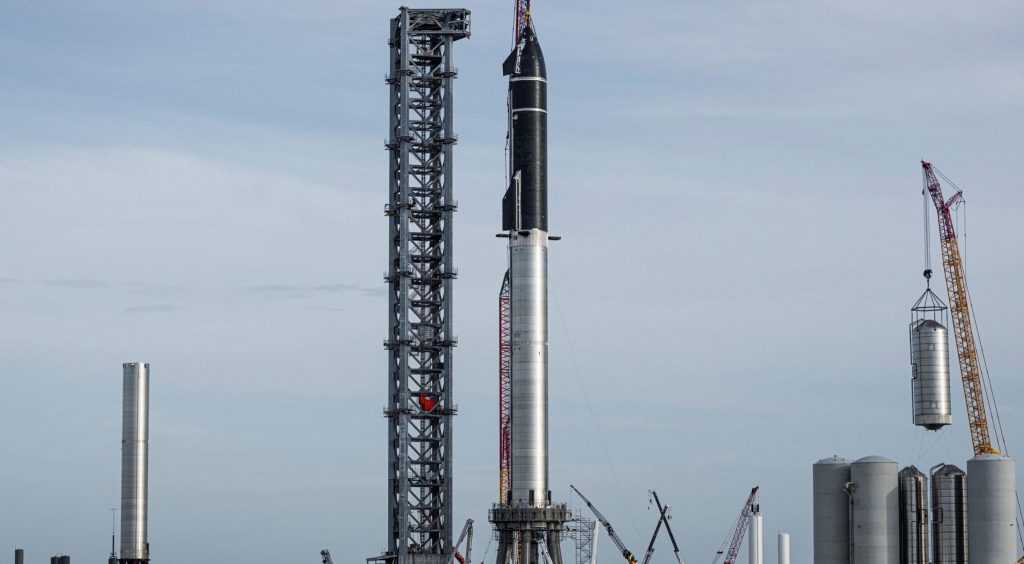
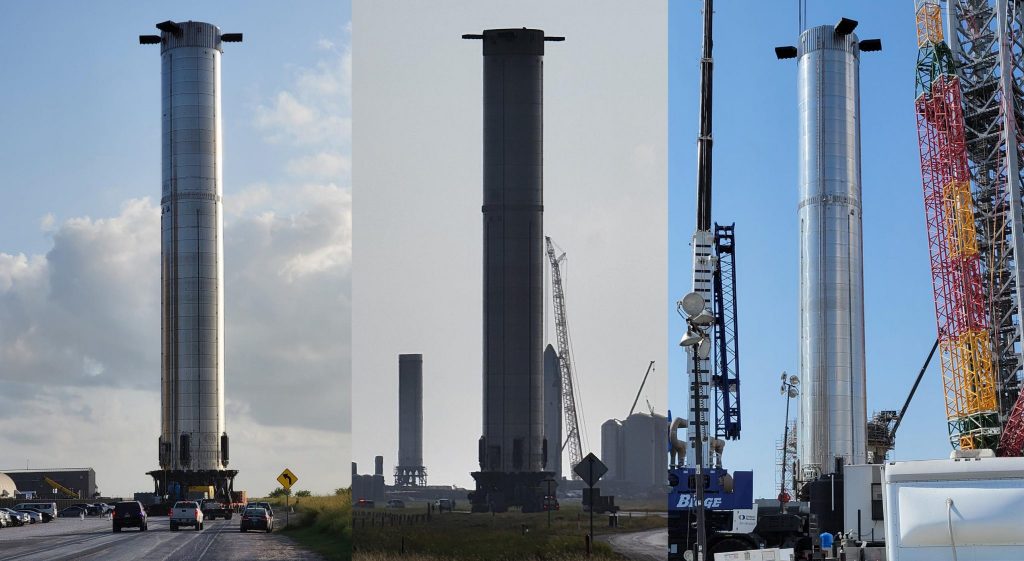
Three months (almost 14 weeks or 100 days) after the Super Heavy prototype’s second trip to the pad, SpaceX has yet to attempt to put the booster through a single proof test. There also appears to be a significant amount of work left to finish installing external ‘aerocovers’ and a heat shield meant to enclose all 29 of its Raptor engines. In the three-year history of Starbase, there isn’t a single prototype of the roughly two-dozen SpaceX has built, tested, and even flown that’s spent even half as long as Super Heavy B4 between apparent structural completion and its first test. Perhaps the fact that Booster 4 is a first-of-its-kind pathfinder explains SpaceX’s uncharacteristic sluggishness or reluctance to actually test the rocket.
In every other instance, SpaceX’s approach to Starship development has been to move incredibly quickly, build a large number of prototypes, and rapidly test those prototypes – often resulting in catastrophic failures. Data is gathered from those failures (SN1, SN3, SN4, SN8, SN9, SN10, SN11, and half a dozen smaller test tanks serve as examples), changes are made, and then the new and improved prototypes that follow repeat the process until SpaceX arrives at a successful design.
Super Heavy B4’s circuitous path has been almost nothing like those of its predecessors. That could also be partly explained by the unavailability of a stand or facilities capable of truly proof testing a Super Heavy, which necessitates a supply of around 3200 tons (7M lb) of liquid nitrogen (LN2; for a cryogenic proof test with full tanks), another 3200 tons of a combination of liquid methane (LCH4) and oxygen (LOx), and the ability to ignite – and survive – as many as 29 to 33 Raptor engines. The suborbital stands SpaceX has used to proof Starships and even Super Heavy Booster 3 don’t even have half the storage capacity required to fully test a booster and the mounts and their surroundings would likely be catastrophically damaged or destroyed by the thrust and blast created by dozens of Raptors.
Still, SpaceX could have theoretically put Booster 4 through a partial cryoproof and maybe fired up as many as nine Raptors at once – not a replacement for full proof testing but still plenty to ensure Super Heavy’s structural integrity and gather invaluable data on clustered Raptor performance. Instead, of course, Super Heavy B4 has sat at Starbase’s former landing zone for more than three months while teams removed engines, reinstalled engines, half-installed a full Raptor heat shield; and installed two of six or seven ‘aerocovers’ needed to protect heat exchangers, racks of pressure vessels, and hydraulic systems installed on the booster’s aft.
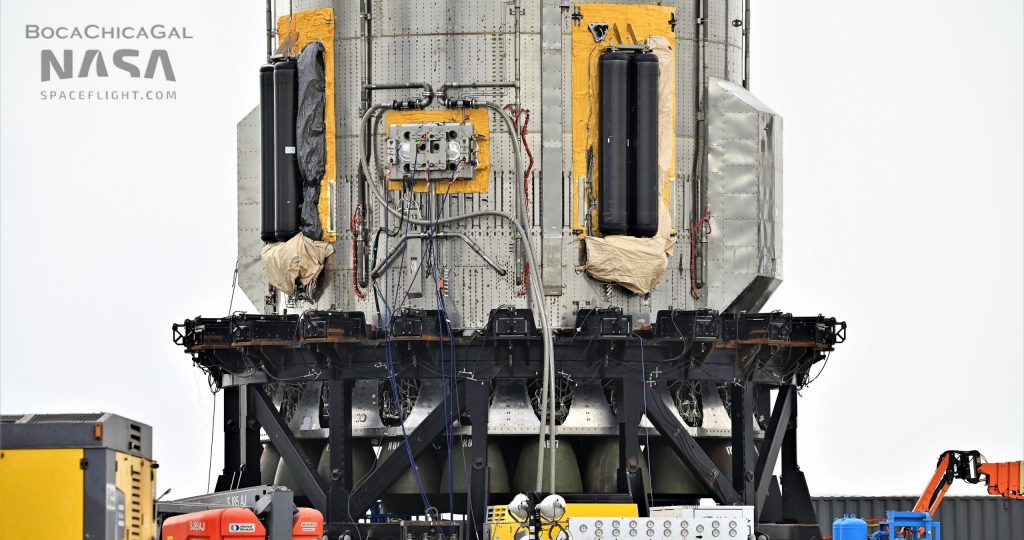

This is all to say that from the outside looking in, Booster 4’s path towards testing and flight has been almost entirely different from that of any other Starship prototype. While still quick in comparison with other launch vehicle development programs, relative to other Starship and Super Heavy prototypes, the rate of B4 progress has been far slower – strongly implying that something is seriously wrong with the booster, that SpaceX no longer feels that partial testing is worth the effort, that finishing Booster 4 just hasn’t been a priority for several months, or some combination of the above.
What that ultimately means is that it’s almost impossible to predict what Super Heavy B4’s future holds beyond the clear evidence that SpaceX will soon reinstall to reinstall it on an orbital launch mount that’s much closer to completion than it was the last time B4 was installed. At this point, it’s just as likely that the booster’s third launch mount installation will just be another mechanical fit test, though the hope is that it will kick off full-scale pneumatic and cryogenic proof testing. It could even culminate in the static fire of some or all of its 29 Raptor engines, which have been installed for several months.


